Known locally as 'The Prom’, the Promenade in Salthill overlooking the Galway Bay is Ireland’s longest promenade, at approximately 3km in length.
Walking along Salthill’s Prom is a favourite pastime of both locals and visitors alike, particularly during the summer. Running from the Claddagh Quay along Salthill, ending at the iconic Blackrock Diving Tower, let’s dive into the history behind the structures along this famous promenade.
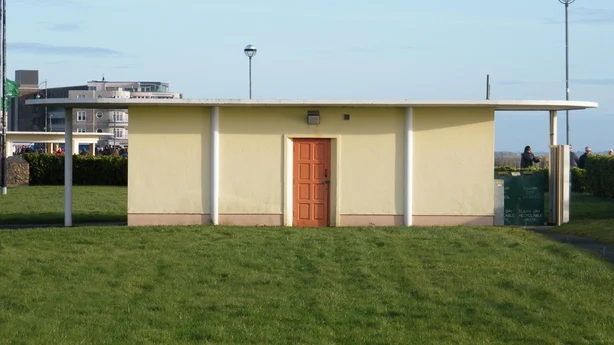
A New Century
In the early 1900s, the Salthill promenade was just a narrow, untarred roadway with no public seating and the beach had barely any sand. From the late 1920s and continuing into the 1930s, what was previously natural shore was developed in the style of a 19th century promenade.
But it was in the forties, when a County Surveyor named George Lee (1) (1891/2 – 1961) took over ownership of the land near the promenade, that the Prom as we know it today began to take shape. He extended the Prom to Grattan Road and created walkways with concrete benches, flowerboxes, and shelters.
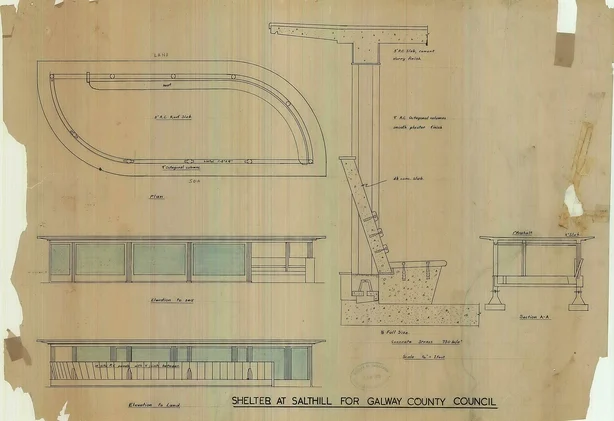
The public conveniences of the late fifties were designed by County Engineer Bart J. Faherty and drawn by J. W Regan. Additional shelters were added in the early seventies, which replicated the forms of the earlier structures with a curved minimal concrete roof projecting at the ends to keep bathers and strollers dry. The designer of these later shelters in unknown.
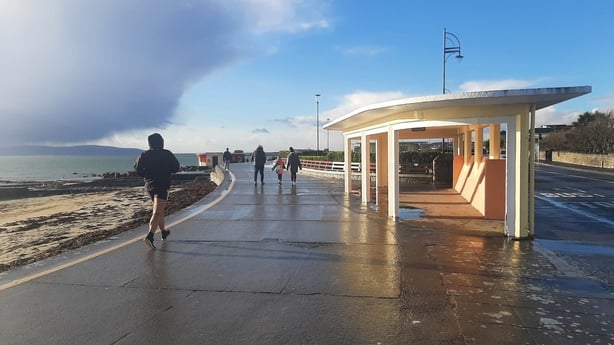
Glam on the prom
The bathing shelters were practical but also added some glamour. These elegant structures would not be out of place in 1930s Miami Beach. They are in the ‘Streamline Moderne’ style, where less is more.
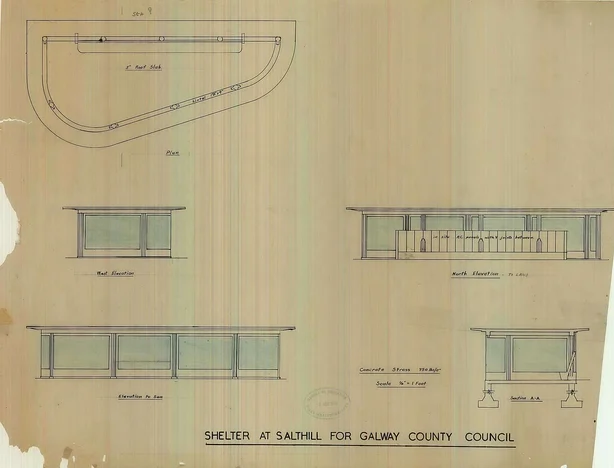
The plans by Galway Corporation show open, single-storey structures with sloping, rendered walls and reinforced, partly cantilevered flat roofs supported by slender, concrete octagonal columns, rectangular beams, and granite faced plinths.

Originally, the bathing shelters had polished timber slats internally to provide seating. Undoubtedly, they are of social, architectural and technical interest, and have a significant group value.
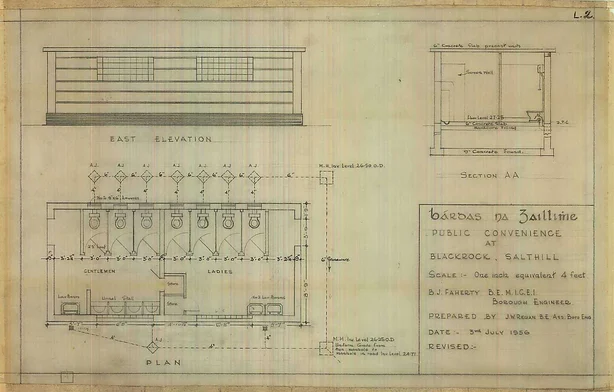
'Sinful' mixed bathing
The engineer’s plans for the shelters never showed the porthole openings we see today. Word had gotten to the Bishop of Galway, Michael Browne (1895 – 1980), attentive to the state of public morality, that young couples were taking advantage of the shelters for clandestine trysts. The Bishop ordered that the wall of each shelter be immediately punctuated with the circular openings.
Bishop Browne believed that ‘mixed’ bathing promoted sin, therefore a ‘Men Only’ sign was erected at the Blackrock swimming area, with the Ladies Beach allocated to women and families. The annual ‘Prom Swim’ was the only occasion when mixing was tolerated. The sign remained until 1971. (2)
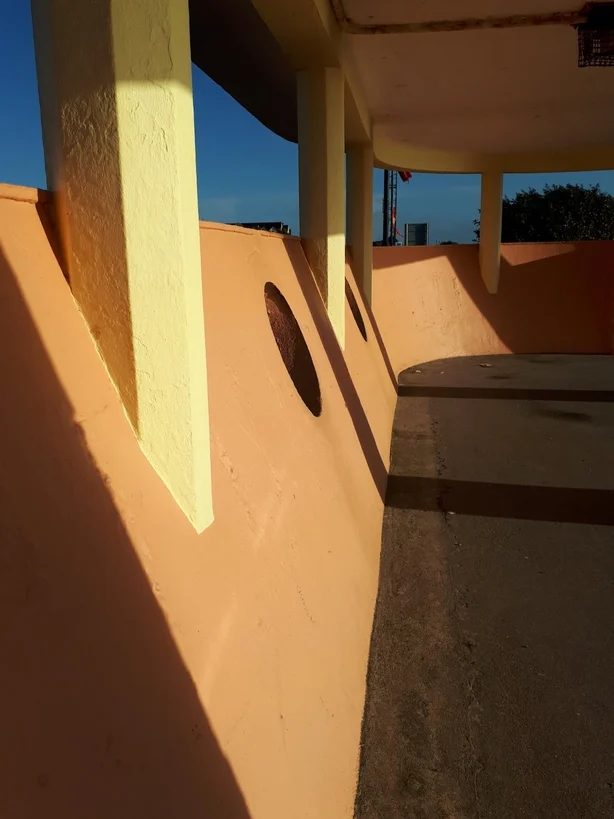
Diving tower
Blackrock diving tower began as a humble springboard in 1885 clandestinely erected on the land of Colonel James O’Hara at a site known as ‘the Black Rock’.

O'Hara did not welcome this attraction and made it difficult for swimmers to get to the rock, but due to its popularity, in 1910 the Urban District of Galway secured a lease on a public right of way to the bathing area at an annual rate of £1.
The springboard was replaced with something more substantial, although not safer. It would take another four decades for the appearance of the well-loved diving tower constructed of ferro-concrete with its three-tier timber diving board, concrete steps and platforms with columns and painted metal railings.
It was designed by Galway City Engineer Edward R. Ryan and built by James Steward Ltd (3). This concrete outcrop was formally opened by the Mayor of Galway in 1954. The diving tower site was completed with concrete walls, a free-standing L-plan shelter, concrete steps, walkways, and S-plan stepped seating area.

Some protection from future storms
The structures are not on the Galway City record of Protected Structures (RPS) at the moment. Instead, there is a general RPS No. (8501) covering Rivers and Waterways (which includes bridges, walling, embankments, piers and other associated infrastructure) that subsumes the Prom and its structures.
They are a distinctive example of seascape buildings that make a special contribution to the character of the area and deserve full conservation protection. They are a substantial example of the use of modern reinforced concrete, along in addition to the use of in-house talent by Local Authorities.
Thank you to the Dr. Jim Higgins, Heritage Officer for Galway City Council and Michael Scott, Architectural Conservation Officer for Galway City Council for kindly providing information and archival plans and to Ciarán Ferrie for use of his photographs.
(1) George Lee was a qualified engineer and County Surveyor from 1949 until his retirement in 1956.
(2) Irish Independent on 9 Sept. 1971 reported that the sign was gone
(3) The granite for the rubble base is from a quarry in Shantalla.
Disclaimer: The copyright of this article belongs to the original author. Reposting this article is solely for the purpose of information dissemination and does not constitute any investment advice. If there is any infringement, please contact us immediately. We will make corrections or deletions as necessary. Thank you.






